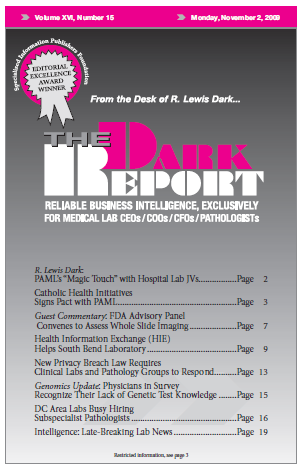CEO SUMMARY: Across the country, there are many efforts to create Regional Health Information Exchanges (HIEs). This has the potential to change the way laboratories connect electronically with referring physicians. This is true in South Bend, Indiana, where the Michiana Health Information Network (MHIN) has operated for 10 years. It turns out that MHIN has …
Health Info Exchange (HIE) Helps South Bend Lab Read More »
To access this post, you must purchase The Dark Report.


